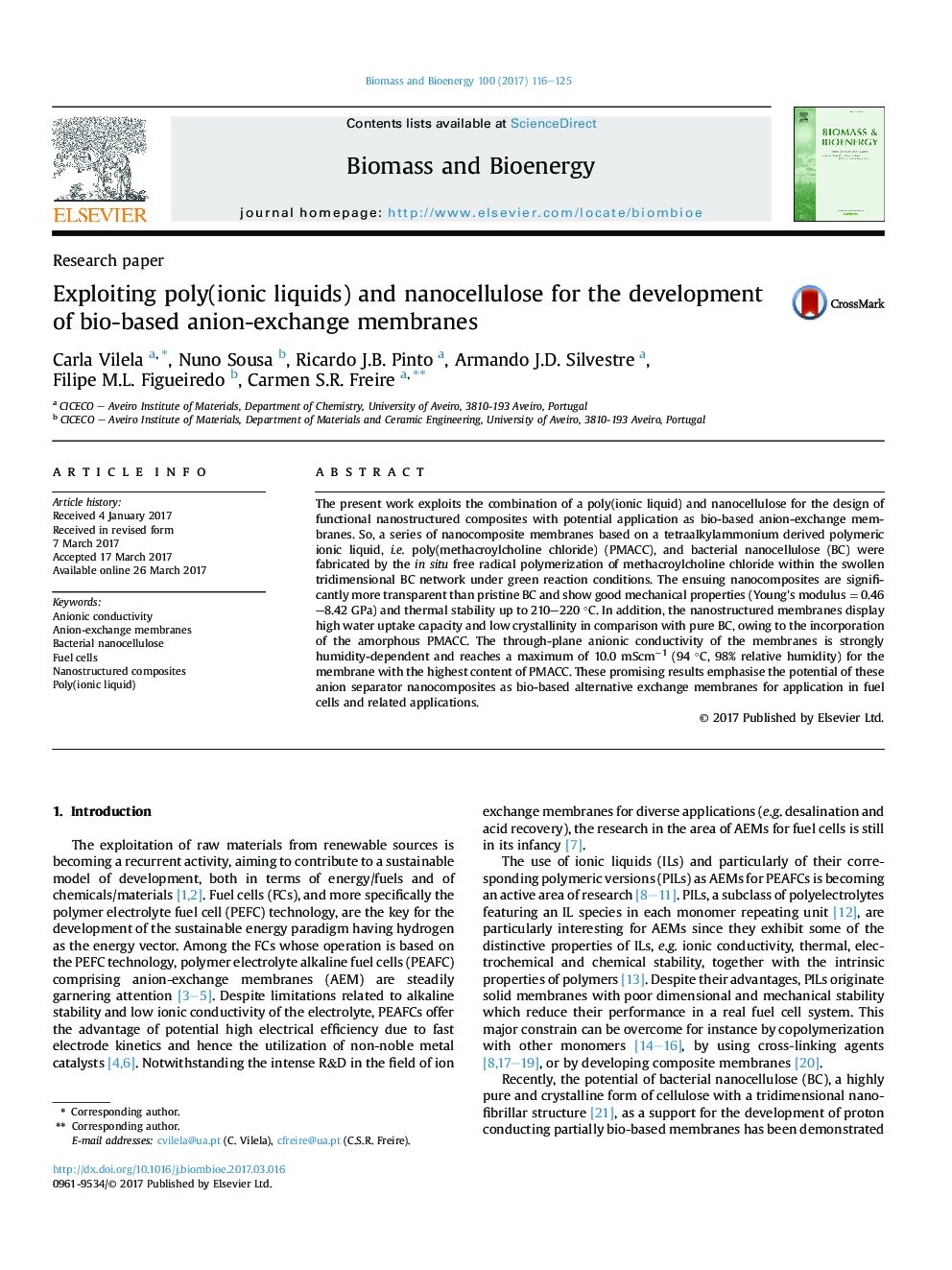| Article ID | Journal | Published Year | Pages | File Type |
|---|---|---|---|---|
| 4996256 | Biomass and Bioenergy | 2017 | 10 Pages |
â¢Nanostructured composites of a poly(ionic liquid) and bacterial cellulose.â¢Nanocomposite membranes exhibit good thermal stability and mechanical properties.â¢Membranes reach a maximum anionic conductivity of 0.01 S cmâ1 (94 °C, 98% relative humidity).â¢Nanocellulose-based composite membranes with potential as green anion separator materials.
The present work exploits the combination of a poly(ionic liquid) and nanocellulose for the design of functional nanostructured composites with potential application as bio-based anion-exchange membranes. So, a series of nanocomposite membranes based on a tetraalkylammonium derived polymeric ionic liquid, i.e. poly(methacroylcholine chloride) (PMACC), and bacterial nanocellulose (BC) were fabricated by the in situ free radical polymerization of methacroylcholine chloride within the swollen tridimensional BC network under green reaction conditions. The ensuing nanocomposites are significantly more transparent than pristine BC and show good mechanical properties (Young's modulus = 0.46-8.42 GPa) and thermal stability up to 210-220 °C. In addition, the nanostructured membranes display high water uptake capacity and low crystallinity in comparison with pure BC, owing to the incorporation of the amorphous PMACC. The through-plane anionic conductivity of the membranes is strongly humidity-dependent and reaches a maximum of 10.0 mScmâ1 (94 °C, 98% relative humidity) for the membrane with the highest content of PMACC. These promising results emphasise the potential of these anion separator nanocomposites as bio-based alternative exchange membranes for application in fuel cells and related applications.
Graphical abstractDownload high-res image (233KB)Download full-size image
